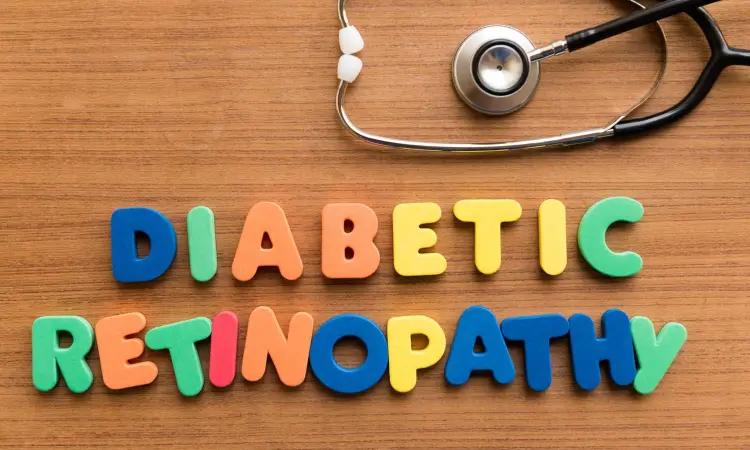TSH Levels Linked To Diabetic Retinopathy Development In T2D Patients
- byDoctor News Daily Team
- 15 July, 2025
- 0 Comments
- 0 Mins

A new study published in Diabetes/Metabolism Research and Reviews suggests that greater thyroid-stimulating hormone (TSH) within the normal range was linked to a greater incidence of Diabetic retinopathy (DR) in type 2 diabetes patients with well-controlled glycaemic state.
Even with type 2 diabetes that is under control, diabetic retinopathy can develop, indicating that there are still DR concerns in this population. Yaxin Wang and colleagues specifically looked at the combined impact of thyroid function and glycemic management as measured by a newly developed metric called time in range (TIR) with DR.
A total of 2740 type 2 diabetic individuals with euthyroid disease were included in this cross-sectional investigation. Thyroid-stimulating hormone, free thyroxine, free triiodothyronine, thyroid peroxidase antibody, and thyroglobulin antibody were among the thyroid markers examined. Data from a continuous glucose metre were used to calculate TIR.
The key findings of this study were:
1. Overall, 1.06 (95% confidence interval [CI] 0.85-1.32) and 1.48 (95% CI 1.19-1.85) were the multivariable-adjusted odds ratios (ORs) for DR across rising tertiles of TSH, respectively.
2. The frequency of DR was 23.8% even in well-controlled patients who met a TIR objective of >70% (n = 1459) and was strongly correlated with TSH (OR = 1.54, 95% CI 1.12-2.12, highest vs. lowest TSH tertile).
3. The joint categories of TIR (>70%, 70%) and TSH (tertiles) were used to divide the participants into 6 groups, and the multivariable-adjusted ORs for DR were highest in the TIR 70% and the highest TSH tertile group when compared to the TIR >70% and the lowest TSH tertile group (OR = 1.96, 95% CI 1.41-2.71).
In conclusion, this finding implies that thyroid dysfunction may contribute to the residual risk of DR. For improved DR management in clinical practise, more consideration should be given to the potential effects of both TIR and TSH. To further support the significance of TSH in risk management of diabetic complications and to investigate the reference range for "normal" TSH in the future, well-designed longitudinal studies involving TSH measurements at several time periods are necessary.
Reference:
Wang, Y., Lu, J., Ni, J., Wang, M., Shen, Y., Lu, W., Zhu, W., Bao, Y., & Zhou, J. (2023). Association of thyroid stimulating hormone and time in range with risk of diabetic retinopathy in euthyroid type 2 diabetes. In Diabetes/Metabolism Research and Reviews. Wiley. https://doi.org/10.1002/dmrr.3639
Disclaimer: This website is designed for healthcare professionals and serves solely for informational purposes.
The content provided should not be interpreted as medical advice, diagnosis, treatment recommendations, prescriptions, or endorsements of specific medical practices. It is not a replacement for professional medical consultation or the expertise of a licensed healthcare provider.
Given the ever-evolving nature of medical science, we strive to keep our information accurate and up to date. However, we do not guarantee the completeness or accuracy of the content.
If you come across any inconsistencies, please reach out to us at
admin@doctornewsdaily.com.
We do not support or endorse medical opinions, treatments, or recommendations that contradict the advice of qualified healthcare professionals.
By using this website, you agree to our
Terms of Use,
Privacy Policy, and
Advertisement Policy.
For further details, please review our
Full Disclaimer.
Tags:
Recent News
Kerala waives Rs 10 lakh discontinuation penalty f...
- 09 November, 2025
Jharkhand health dept announces SOP for ICU and CC...
- 09 November, 2025
Doctors oppose Punjab govt's decision to set up me...
- 09 November, 2025
Biocon gets 2 USFDA observations for Visakhapatnam...
- 09 November, 2025
Daily Newsletter
Get all the top stories from Blogs to keep track.


0 Comments
Post a comment
No comments yet. Be the first to comment!